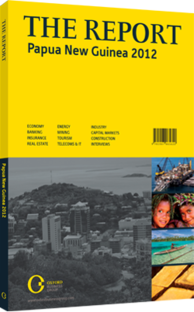Angling for a raise: The fishing industry looks set for a hefty catch
Already a showcase for downstream growth of one of Papua New Guinea’s valuable natural resources, the seafood processing industry is looking to capitalise on its success through the creation of a new Pacific Marine Industrial Zone (PMIZ). Located near the town of Vidar on the north-eastern coast, the project is expected to serve as a catalyst for the burgeoning tuna processing industry, which is already operating not just in PNG’s territorial waters, but also across the entire region.
According to the government proposal, the PMIZ’s three primary objectives are to maximise the economic benefits of the marine resources for PNG and its partners and stakeholders; create economies of scale strong enough for the proposed zone to be internationally competitive; and to establish a common service facility for all Pacific Islands countries to consider as an investment opportunity – one that will serve as a major off-loading centre for tuna caught from their respective fishing grounds. According to the Pacific Tuna Forum, the estimated raw value of the annual tuna catch in PNG is approximately $1.35bn, which could be boosted up to $2.7bn through the addition of value-added initiatives, such as the PMIZ.
ANCHORS AWAY: Initial stages of the project are already under way, with the government having acquired, cleared and fenced a 215-ha plot adjacent to existing tuna processing facilities. As the project’s initiator, the government will be responsible for providing infrastructure for private companies to operate in. These include a wharf as well as onshore auxiliary facilities, such as cold storage, ice plant, fuel depot, electricity, water, telecommunications infrastructure, waste treatment plant, machine workshop and fish auction halls.
One of the most significant aspects of the project will be the construction of a dedicated new port facility. With a dearth of modern logistics facilities, the ability to efficiently import and export oceangoing goods should prove a strong selling point for companies looking to set up operations in the zone. The project is expected to be ready for occupancy by 2015, when it will be able to accommodate up to 10 processing plants along with supporting industries like labelling, packaging, can making and logistics. In February 2012 Niugini Tuna, a joint venture between Fair Well Fishery, RD Group (the Philippines) and Tri Marine (EU), signed on to build the first $27.5m, 200-tonnes-per-day tuna processing plants at the site.
FISHING FOR HELP: After initiating the project with financing of PGK30m ($14.28m), the government was able to secure a $70m concessional loan from the Chinese Export Import Bank in late 2011. The deal was not without concessions, however, as the primary stipulation indicated 70% of the project development contracts must be awarded to a Chinese developer employing Chinese technology, labour and equipment.
The zone’s development will be a multinational effort, with DECO of South Korea hired in February 2012 to manage the project, which is being built by Chinese construction firm Shenyang International Economic and Technical Cooperation Company. Work on the initial phase of development is expected to begin in July 2012 and take 18 months to complete.
LURING IT IN: In addition to the tuna industry, the government is optimistic the PMIZ can lure in processing operations for other agricultural products. With its close proximity and road access to the farmland-rich central highlands region, the PMIZ is well positioned to become a strong player in the downstream agricultural sector. Given the current state of transportation infrastructure, the coffee, tea and other segments operating in the region would welcome an alternative to the current port facilities in Lae and Madang.
Progress on the PMIZ has not been without difficulty, however, as the government has struggled to meet funding deadlines for its $11.2m investment commitments. The zone’s legality has also been challenged by a number of non-governmental organisations. As of March 2012 there were at least two outstanding legal actions against the development, based on its environmental impact and issues involving land ownership.
You have reached the limit of premium articles you can view for free.
Choose from the options below to purchase print or digital editions of our Reports. You can also purchase a website subscription giving you unlimited access to all of our Reports online for 12 months.
If you have already purchased this Report or have a website subscription, please login to continue.

